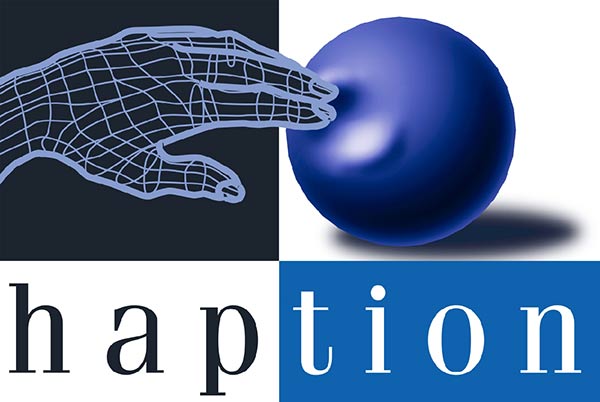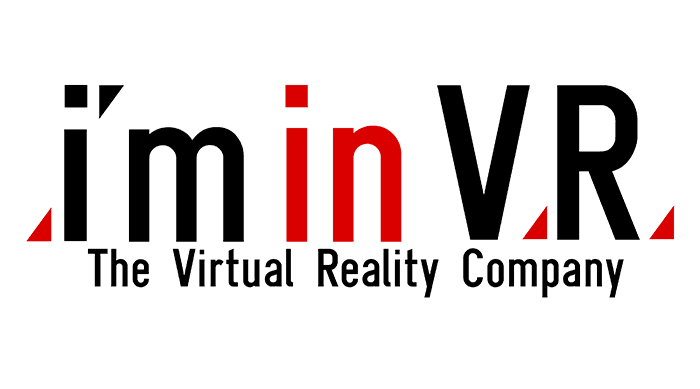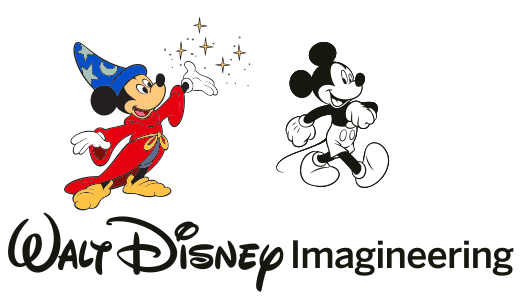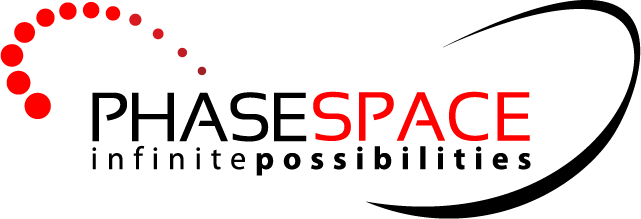Awards
- IEEE VGTC 2014 Virtual Reality Career Award: Steven K. Feiner
- IEEE VGTC 2014 Virtual Reality Technical Achievement Award: Doug A. Bowman
Best Paper
Mixed Reality Virtual Pets to Reduce Childhood Obesity
Kyle Johnsen, Sun Joo Ahn, James Moore, Scott Brown, Thomas P. Robertson, Amanda Marable, and Aryabrata Basu
Best Short Paper
Temporally Enhanced 3D Capture of Room-sized Dynamic Scenes with Commodity Depth Cameras (soon available here and on IEEE Digital Library)
Mingsong Dou and Henry Fuchs
Honorable Mention (Best Paper)
Niels Christian Nilsson, Stefania Serafin, and Rolf Nordahl
Honorable Mention (Best Paper)
Diego Rivera-Gutierrez, Rick Ferdig, Jian Li, and Benjamin Lok
Best Poster
Social Presence in Mixed Agency Interactions
Andrew Robb and Benjamin Lok
Honorable Mention (Best Poster)
Assessing Exertions: How an increased level of immersion unwittingly leads to more natural behavior
Kevin Ponto, Karen Chen, Ross Tredinnick, and Robert G Radwin
Honorable Mention (Best Poster)
An Enhanced Steering Algorithm for Redirected Walking in Virtual Environment
Mahdi Azmandian, Rhys Yahata, Mark Bolas, and Evan Suma
Best Research Demo
Ashley L. Guinan, Markus N. Montandon, Andrew J. Doxon, and William R. Provancher
Honorable Mention (Best Research Demo)
Diplopia: A Virtual Reality Game Designed To Help Amblyopics
James Blaha and Manish Gupta
Honorable Mention (Best Research Demo)
Automatic Acquisition and Animation of Virtual Avatar
Ari Shapiro, Andrew Feng, Ruizhe Wang, Gerard Medioni, Mark Bolas, and Evan A. Suma
IEEE VGTC 2014 Virtual Reality Career Award: Steven K. Feiner
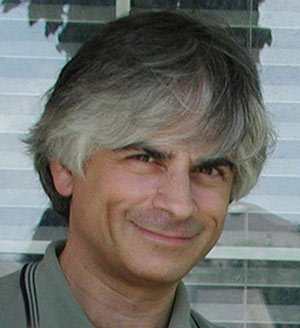
The 2014 Virtual Reality Career Award goes to Steve Feiner of Columbia University, in recognition of his lifetime contributions to augmented reality and virtual reality, including seminal research on mobile augmented reality, automated design and layout, and applications to task assistance and navigation. Since 1989, Steve Feiner and his students have developed novel virtual reality and augmented reality interaction techniques and systems. His research has addressed multivariate data visualization; coordinated use of head-worn displays with wall-mounted, desk-top, and hand-held displays; automated design of augmentations that meet task goals and occlusion constraints; and experimental applications to a diverse set of fields, including tourism, journalism, archaeology, construction, field guides, and maintenance, repair, and assembly. The IEEE VGTC is pleased to award Steve Feiner the 2014 Virtual Reality Career Award.
Biography
Steve Feiner is Professor of Computer Science at Columbia University, where he directs the Computer Graphics and User Interfaces Lab, and co-directs the Columbia Vision and Graphics Center. He received a PhD in Computer Science from Brown University on automated generation of explanatory 3D graphics, advised by Andy van Dam. Steve started his faculty career at Columbia University in 1985, and by 1989 was working with PhD student Cliff Beshers to explore multivariate data visualization in desktop VR, using a stereo monitor and DataGlove. The following year, Steve began to develop his first AR system: an X11 window manager that embedded a small flat panel display within a large virtual information surround of 2D windows, viewed on a head-tracked, custom-built, monocular, optical see-through HWD. In 1991, with funding from an ONR Young Investigator Award, Steve and his PhD students, Dorée Seligmann and Blair MacIntyre, combined Dorée’s earlier work on a rule-based system that designed pictures explaining maintenance tasks with new software developed by Blair for their HWD. The result was KARMA (Knowledge-based Augmented Reality for Maintenance Assistance), which dynamically synthesized adaptive, animated AR instructions for performing simple end-user maintenance of a laser printer.
In 1993, Steve and Steve Bryson co-organized the IEEE 1993 Symposium on Research Frontiers in Virtual Reality. Along with IEEE VRAIS 1993 (Virtual Reality Annual International Symposium), it evolved into what is now IEEE VR. (Steve would later be program co-chair for VRAIS 1995, VR 2000, and VR 2012.)
Excited about the potential for outdoor AR, in 1996, Steve, Blair, and PhD student Tobias Höllerer, created the first backpack-based mobile AR system using differential GPS to track the wearer’s position and an IMU to track the orientation of a see-through HWD. Working with colleague Tony Webster, their “Touring Machine” allowed a user to walk around campus, viewing overlaid information about buildings and departments, streamed from an experimental wireless network. Later generations of his lab’s indoor and outdoor AR systems would support automated layout of augmentations, multimedia news stories intertwined with the environment, “hybrid user interfaces” that combined HWDs with other complementary display technologies, multimodal interaction, building construction, equipment assembly, games, and authoring tools, much of it funded by ONR, working with Larry Rosenblum’s NRL VR Lab, and NSF. Steve and his students are currently exploring urban information visualization using HWDs in concert with tabletop and hand-held displays; task assistance for collaborating users, both co-located and remote; and techniques for transitioning among viewpoints in AR.
Steve is coauthor of two editions of Computer Graphics: Principles and Practice, and was elected to the CHI Academy in 2011. Together with his students, he has won the ACM UIST Lasting Impact Award in 2010 for work on supporting head-fixed, body-fixed, and world-fixed 2D windows in wearable AR and hypertextually linking them to real-world objects, and best paper awards from ACM UIST, ACM CHI, ACM VRST, and IEEE ISMAR. Recently, Steve has been program co-chair for IEEE Virtual Reality 2012 and for Foundations of Digital Games 2012, a papers subcommittee co-chair for ACM CHI 2013–2014, and doctoral symposium chair for ACM UIST 2009–2012, and is on the editorial advisory board for Computers & Graphics, and an associate editor of ACM Transactions on Computer–Human Interaction.
Award Information
The IEEE VGTC Virtual Reality Career Award was established in 2005. It is given every year to an individual to honour that person’s lifetime contribution to virtual & augmented reality. VGTC members may nominate individuals for the Virtual Reality Career Award by contacting Arie E. Kaufman at vgtc-vr-awards@vgtc.org
IEEE VGTC 2014 Virtual Reality Technical Achievement Award: Doug A. Bowman

The 2014 Virtual Reality Technical Achievement Award goes to Doug A. Bowman of the Center for Human-Computer Interaction at Virginia Tech, USA, in recognition of research and design achievements that have significantly advanced knowledge in the fields of 3D user interfaces and virtual reality. Professor Bowman’s work on 3D UIs has resulted in both important interaction technique designs and a deep understanding of principles and guidelines for designing effective 3D spatial interfaces. He has also contributed significantly to the theory and practice of VR through his research on the effects of fidelity on the effectiveness of VR systems. His work has profoundly influenced the way that 3D UIs and VR systems are characterized and designed. The IEEE VGTC is pleased to present Doug A. Bowman with the 2014 Virtual Reality Technical Achievement Award.
Biography
Doug A. Bowman is Professor of Computer Science and Director of the Center for Human-Computer Interaction at Virginia Tech. He earned his M.S. (1997) and Ph.D. (1999) in Computer Science from the College of Computing at Georgia Tech, where he studied with Dr. Larry F. Hodges in the Graphics, Visualization, and Usability Center. He received a B.S. in Mathematics and Computer Science in 1994 from Emory University.
As a graduate student at Georgia Tech, Doug was one of the first to broadly study the design and evaluation of 3D interaction techniques for immersive VR systems. His seminal Ph.D. dissertation research resulted in highly usable interaction technique designs (such as the HOMER manipulation technique), theoretical frameworks for understanding 3D UIs (including identification of the “universal” 3D interaction tasks and taxonomies of techniques), and empirical findings on the relative performance of various 3D interaction metaphors. Much of this knowledge was collected in the widely cited book 3D User Interfaces: Theory and Practice, which Doug co-authored with Ernst Kruijff, Joe LaViola, and Ivan Poupyrev.
As a faculty member at Virginia Tech for the last 15 years, Doug has continued to study 3D UIs with his students in the 3D interaction group. 3D UI projects in his lab have included new interaction techniques (e.g., rapMenu, SQUAD), software toolkits for 3D UI development, and applications of 3D UIs in domains such as engineering, scientific visualization, architecture, and entertainment. Teams from the 3D interaction group were awarded first prize in the IEEE 3DUI contest each year 2010-2012.
His research has also been motivated by the potential of immersive VR systems to provide measurable benefits to users. A fundamental research question is, “What level of fidelity (immersion) do VR systems need in order to realize significant benefits?" With his students and colleagues, he has performed dozens of empirical studies to determine the effects of various components of fidelity on task performance, learning, engagement, and other measures of interest. This knowledge is now being collected in the VR knowledgebase, an online repository of empirical findings for the VR research community. A key collaborator in this work has been Dr. Tobias Höllerer of the University of California, Santa Barbara, where Doug spent a sabbatical year in 2008-2009.
Doug’s research has been published widely in peer-reviewed journals and conferences, and he is one of the most-cited authors in the fields of VR and 3D UIs. He was awarded a National Science Foundation CAREER grant for his work on domain-specific 3D UIs, and has received additional funding from NSF, the Office of Naval Research, and DARPA, among others. He was named a Distinguished Scientist by the ACM in 2010. He has served as program chair and general chair of the IEEE Virtual Reality conference, and was one of the founding co-chairs of the IEEE Symposium on 3D User Interfaces. He now serves on the steering committees of both events.
Award Information
The IEEE VGTC Virtual Reality Technical Achievement Award was established in 2005. It is given every year to recognize an individual for a seminal technical achievement in virtual and augmented reality. VGTC members may nominate individuals for the Virtual Reality Technical Achievement Award by contacting Arie E. Kaufman at vgtcvr-awards@vgtc.org











